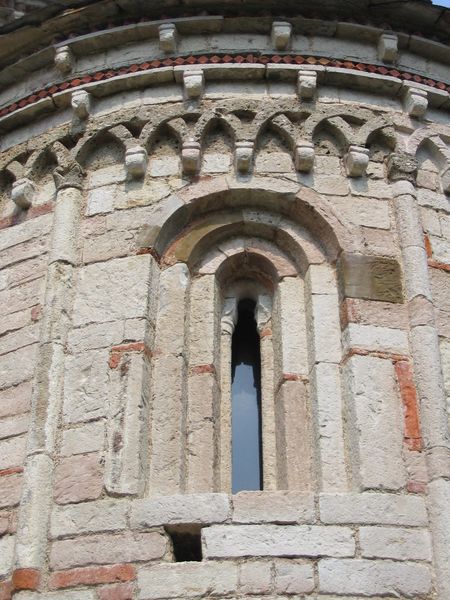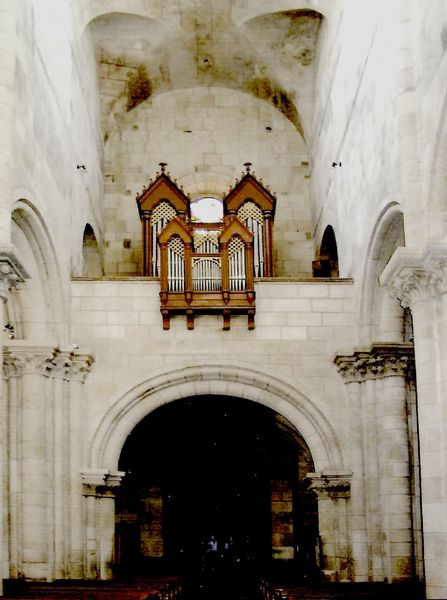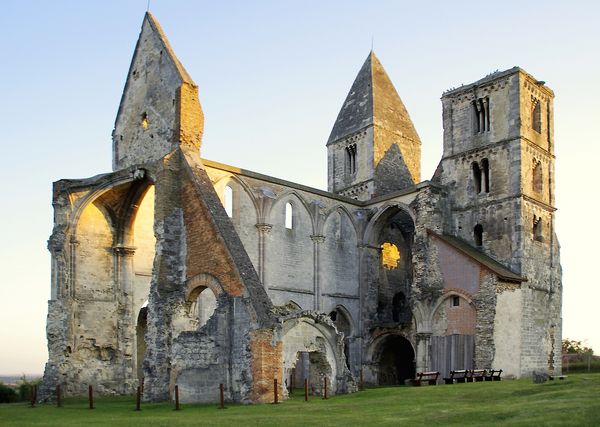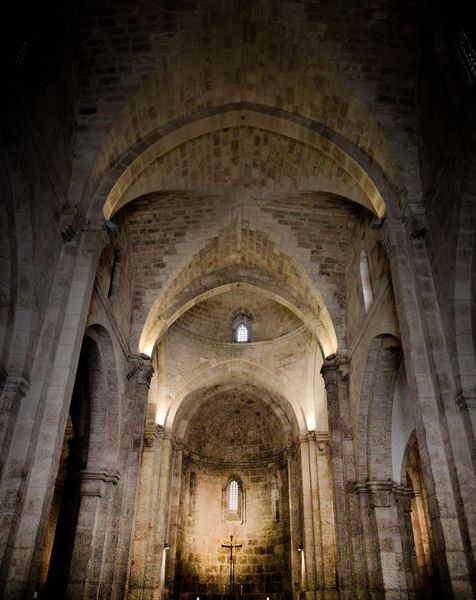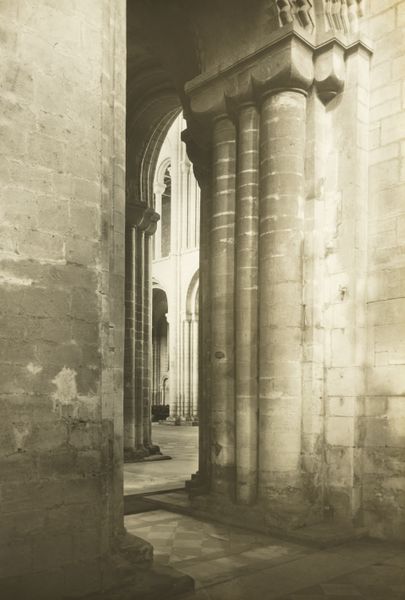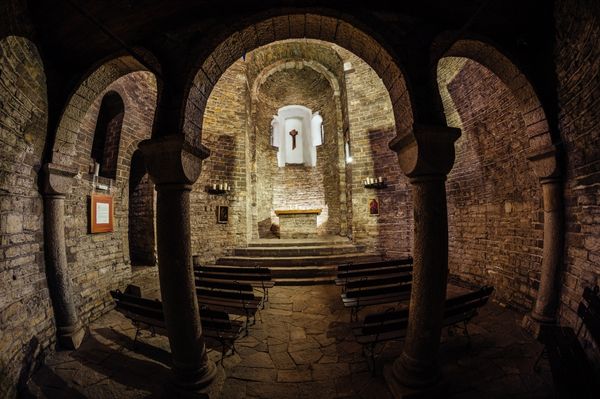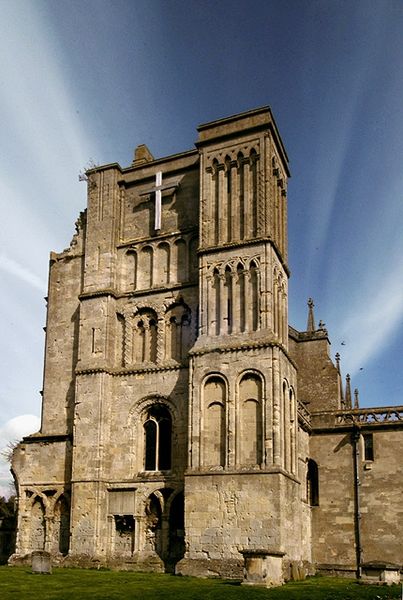
architecture
#
medieval
#
holy-places
#
romanesque
#
arch
#
history-painting
#
architecture
Copyright: Public domain
Curator: Before us stands an image of the Zsámbék Premontre Monastery Church in Hungary, an architectural marvel dating back to around 1220. Editor: Wow, the bones of it, just the skeletal remains, reach toward the sky! There's something undeniably powerful about ruins; a beauty in its brokenness, almost. Curator: Precisely! And what is interesting is the weight carried by religious structures of that period. Think of the historical events witnessed and meanings that have shifted around such architectures. This church was once at the center of spiritual and political life. Now look, those arched entryways lead us towards light, despite everything. Editor: Right, the pointed arches tell the transition into Gothic style, also giving this forward looking and dynamic mood, wouldn't you say? I see it too as a commentary on impermanence, reflecting on empires rise and fall, religious powers, and so on, inviting contemplation on cycles of power and decay. Curator: Very much, the interplay between what’s left and the untouched allows us to reflect upon human endeavours against the passage of time and perhaps also an illustration of shifting cultural identities within a historical landscape. The ruins present a tangible dialogue between destruction and renewal. Editor: Considering its desecration and the changing face of the country throughout its history, this surviving piece reflects strength against the changing cultural fabric that persists beyond ideological constraints. I see it echoing both strength and vulnerability. Curator: It has also lost several times its functionality. Think that its materiality reflects centuries worth of changes! Editor: Well, seeing that enduring testament to architectural ambition, and witnessing its symbolic narrative about the intersection of fragility and resistance, really transforms how I see not just ruins, but built environment at large. Curator: Absolutely, It inspires awe to the symbolic intersection with both our human narratives but also broader context in which historical memory gets inscribed into a landscape that keeps living beyond initial constraints and uses.
Comments
No comments
Be the first to comment and join the conversation on the ultimate creative platform.

